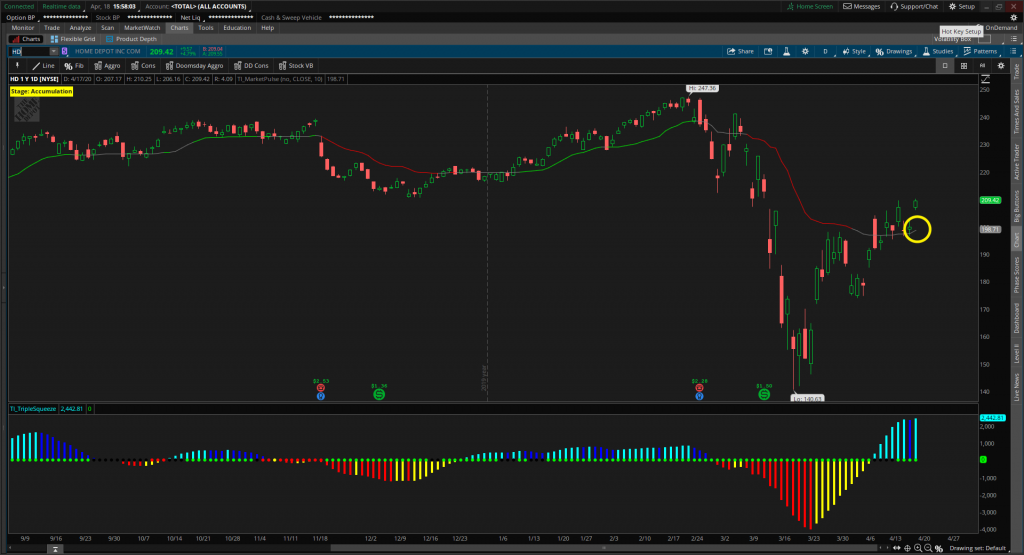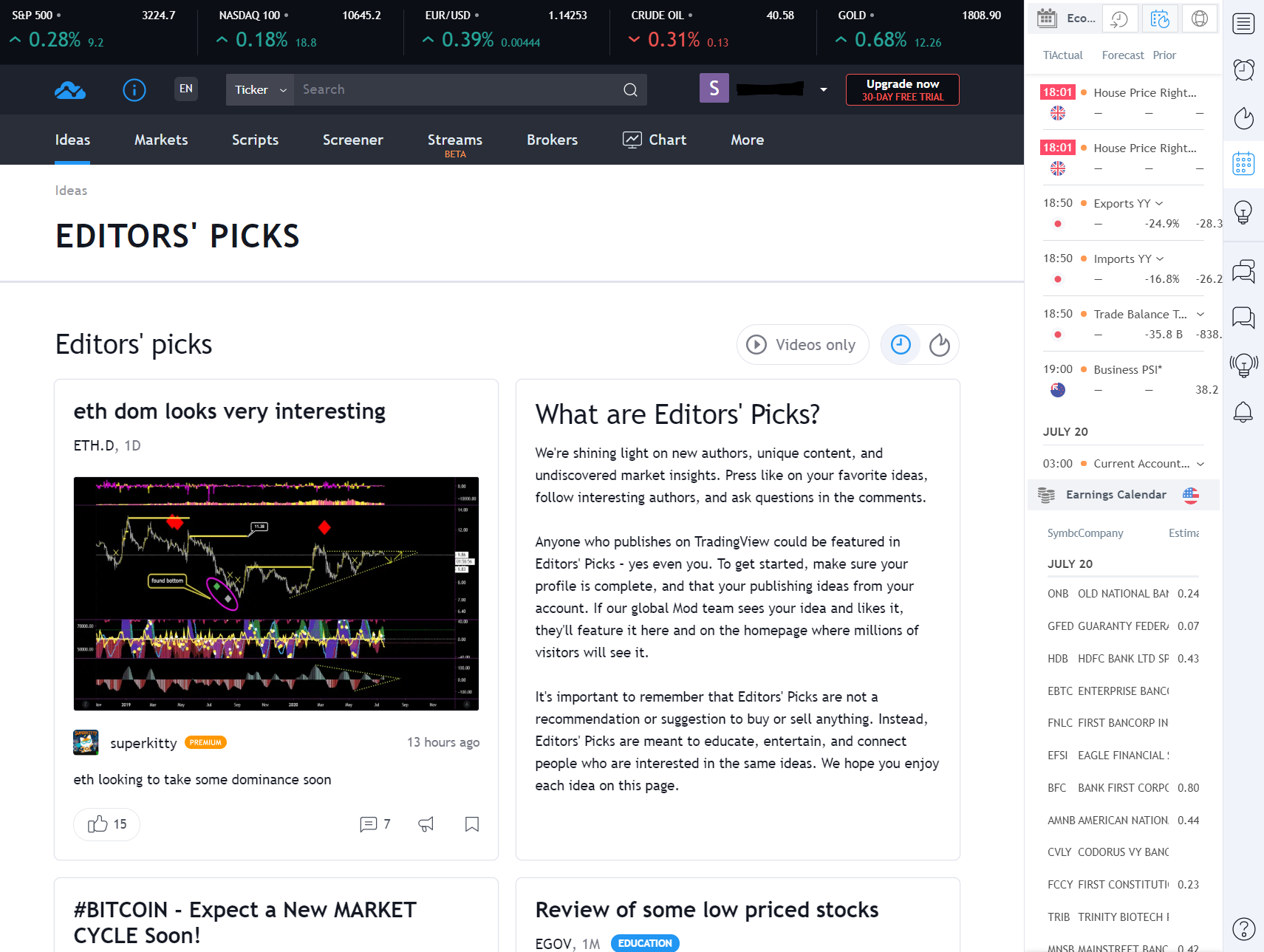Written and contributed by Rich Kaczmarek
Thinkorswim download tutorial which shows you the simple process on how to download ThinkorSwim platform. 🎈 Start your 14-day free trial with our trading com. In general, the following operating system versions are supported. Other older versions may work, but are not officially supported. Windows: Windows 8+ minimum, Windows 10+ recommended. Mac OS X: version 10.13 minimum, 10.14 recommended. Linux: Ubuntu 18.04 LTS minimum, 18+ recommended. IOS/Apple Mobile: iOS 9+ minimum, 10+ recommended.
You can’t beat a spreadsheet for turning big chunks of data into actionable information. Without some experience in programming, however, it isn’t always the easiest way to manipulate real-time data.
Let’s write (get it?) that wrong! It is easy to have ThinkOrSwim (TOS) stream live data into Excel but it’s not well-documented. (There’s a harder way, too, that’s not well-documented. You’ll get an overview of both, you crazy kids, but we’ll focus on the easier.) So, let’s go through a few explanations, show you how to connect the two programs and give a couple examples to get you on your way.

Why would you want to know how to do this stuff? Because you probably have a couple of ideas or questions swimming around. If you’ve got imagination and take a little time to learn, you can create a real-time model in Excel that proves (or disproves) your hypothesis or gives you answers.
And it’s fun.
On with the show!
Grab some coffee and stay awake!
Let’s slog through some technical explanations. I’ll try to make it as painless as possible BUT if you can learn to understand the difference between a Call and Put, you’re certainly able to understand the difference between DDE and RTD.
If you don’t drink coffee and couldn’t care less about technical details, jump to the next section and wait for us there.
DDE and RTD are two different mechanisms that allow Excel to talk with the outside world. Specifically, DDE (Dynamic Data Exchange) is an older technology that links Microsoft products and RTD (Real-Time Data) retrieves real-time data from a program that supports COM automation but there’s overlap for what we’re trying to do.
(I know. You’re thinking, “Where can I read more about this exciting stuff?!?!” Slow down, Turbo; you can visit https://msdn.microsoft.com/en-us/library/aa140061(office.10).aspxafter reading the rest of this article.)
Which method is better? Well, as with all things technological, the answer is “it depends.” (This iswhen most sane people throw up their arms in exasperation with most technology people. But stick with me.)
Both are kind of real-time. DDE refreshes an Excel cell when TOS updates its data; this is known as “interrupt driven.” RTD is interrupt driven, too, but Excel isn’t interrupted by TOS changing data; the interrupt comes from a clock timer, and the timer can be changed.
You can imagine that DDE may get updated faster than RTD because TOS data may change before the clock timer goes off. Is that bad? Not really if you consider we’re talking about milliseconds.
Two more items you should know:
- RTD puts less of a load on the ThinkOrSwim servers, so you can see why they want to move from DDE to RTD. (They support both mechanisms right now.)
- DDE needs “explicit data,” which means you need to give it exactly what it wants. If you want the last price of RUT in cell G2, you need to ask for the last price of RUT in cell G2. If you want the last price of SPX, you have to completely change what you ask in cell G2.RTD can use explicit data but it can also use “implicit data.” That means you can say, “Hey, G2, give me the last price for the underlying that’s in cell B2.” Better, you can change B2 from RUT to SPX anytime, without doing anything to cell G2, and G2 will return the last price of SPX.Why is that good? Because Excel can make do different things with the live data that will soon be streaming into your spreadsheet. For a non-programmer, RTD is easier to use than DDE.

What’s the conclusion? DDE may be technically faster but, for simplicity and user-level flexibility, RTD is the way to go. We’re big easy fans so let’s get moving with RTD.
In the previous section I talked about my old friends, cells B2 and G2, so we’ll use them in our example.
Step 1: Run ThinkOrSwim. (Get itat https://mediaserver.thinkorswim.com/installer/install.html.)
Step 2: After ThinkOrSwim is running, run Excel. (We use Excel 2016 for Windows but this works in Excel 2007, too. No guarantees for any other operating system or any other spreadsheet program.)
Step 3: To keep it all straight in our head, let’s create some headers. Make cells B2 and G2 in your spreadsheet look like this:
Step 4: In cell B2 (under Symbol), type RUT.
Step 5: Ready for the magic of RTD? Paste the following into cell G2 (under LAST):
=RTD(“TOS.RTD”,”LAST”,B2)
Feel free to type it in yourself if you don’t want to copy & paste, but make sure you don’t forget the 2 commas between “TOS.RTD” and “LAST”; don’t forget the double quotes; LAST must be capitalized and remember to press the <Enter> key to accept the equation (and leave cell G2).
If you entered everything correctly, your spreadsheet should look something like this:
The number may not match because we’re looking at RUT on different days and times. Other than that – CONGRATULATIONS! What you see is TOS is giving Excel live data, the last price paid for RUT.

Now change RUT to SPX in B2 to get the last price for SPX. It worked? You’re a superstar!
Good enough for now. Experiment a little, then save this workbook as LockeRTD. Next week we’ll build on top of what you did today, make Excel do more work than you, and delve into derivatives.
(By the way, if you have about 30 seconds and would like to view ThinkOrSwim’s documentation on RTD, click here.)
Written and contributed by Rich Kaczmarek
To guide you through thinkorswim Mobile on the iPad (iOS), we've composed the playlist below: watch it in full or just focus on topics that are the most interesting to you.
Content intended for educational/informational purposes only. Not investment advice, or a recommendation of any security, strategy, or account type.
Past performance does not indicate or guarantee future success. Returns will vary and all investments involve risks, including loss of principal.
Options are not suitable for all investors as the special risks inherent to options trading may expose investors to potentially rapid and substantial losses. Options trading privileges subject to TD Ameritrade review and approval. Please read Characteristics and Risks of Standardized Options before investing in options.
Thinkorswim Mac Os Download Mac
Margin trading increases risk of loss and includes the possibility of a forced sale if account equity drops below required levels. Margin is not available in all account types. Margin trading privileges subject to TD Ameritrade review and approval. Carefully review the Margin Handbook and Margin Disclosure Document for more details. Please see our website or contact TD Ameritrade at 800-669-3900 for copies.
Mac Os Download Iso
TD Ameritrade, Inc., member FINRA / SIPC. TD Ameritrade is a trademark jointly owned by TD Ameritrade IP Company, Inc. and The Toronto-Dominion Bank. © 2020 TD Ameritrade.